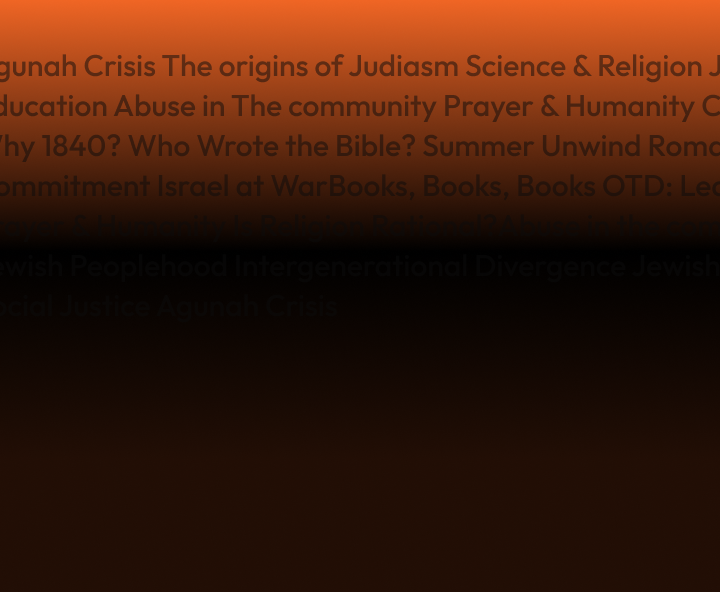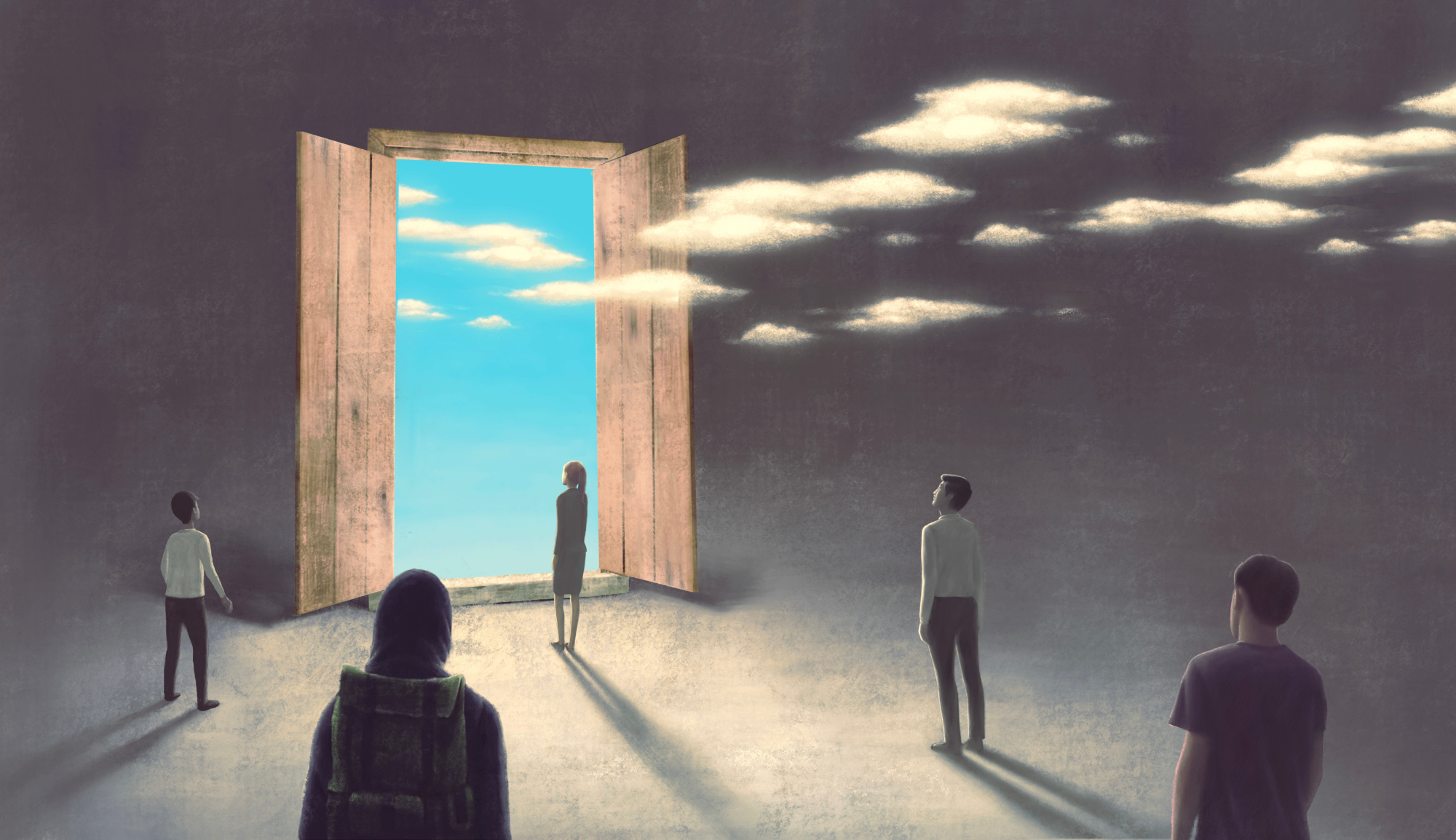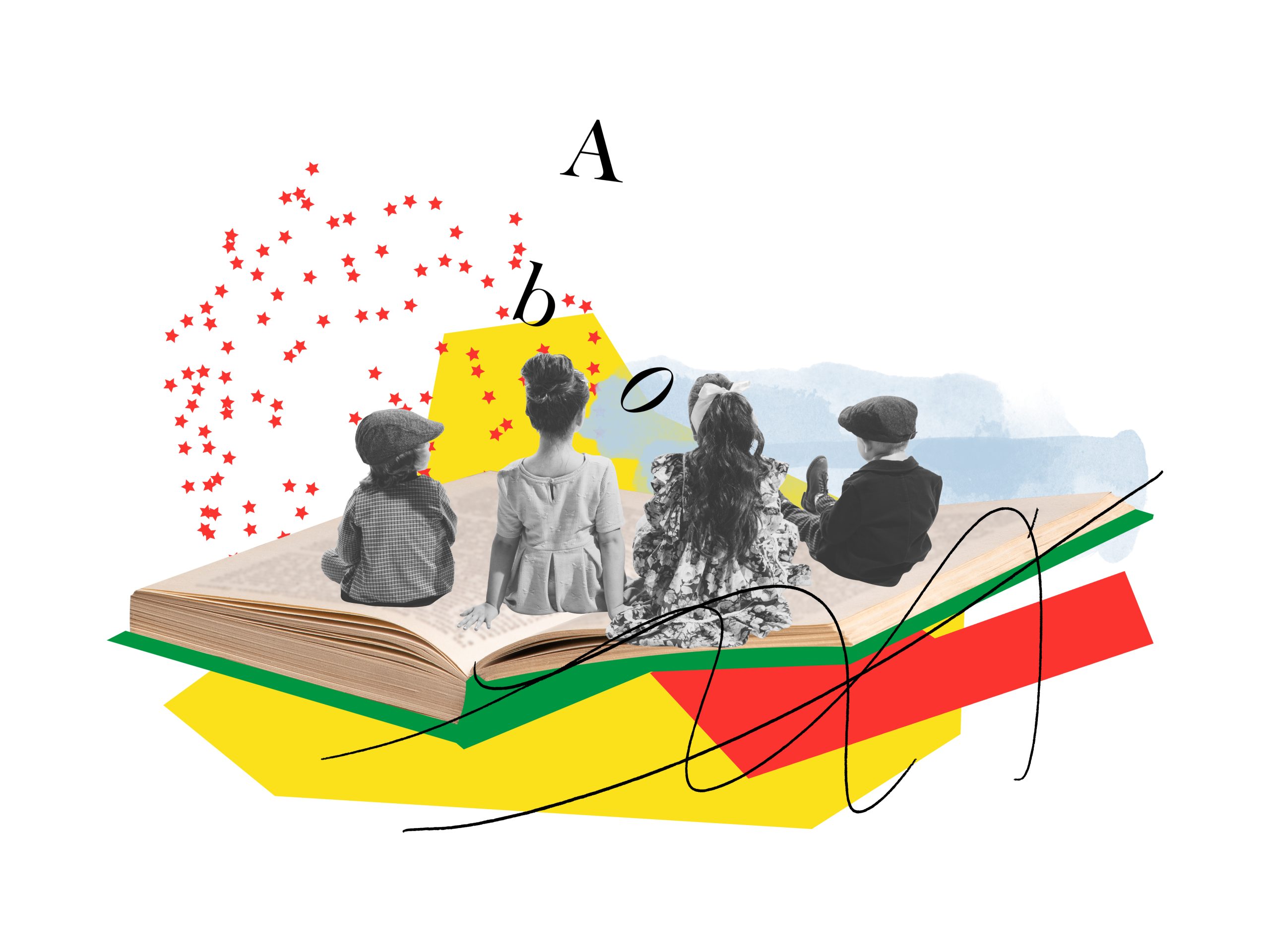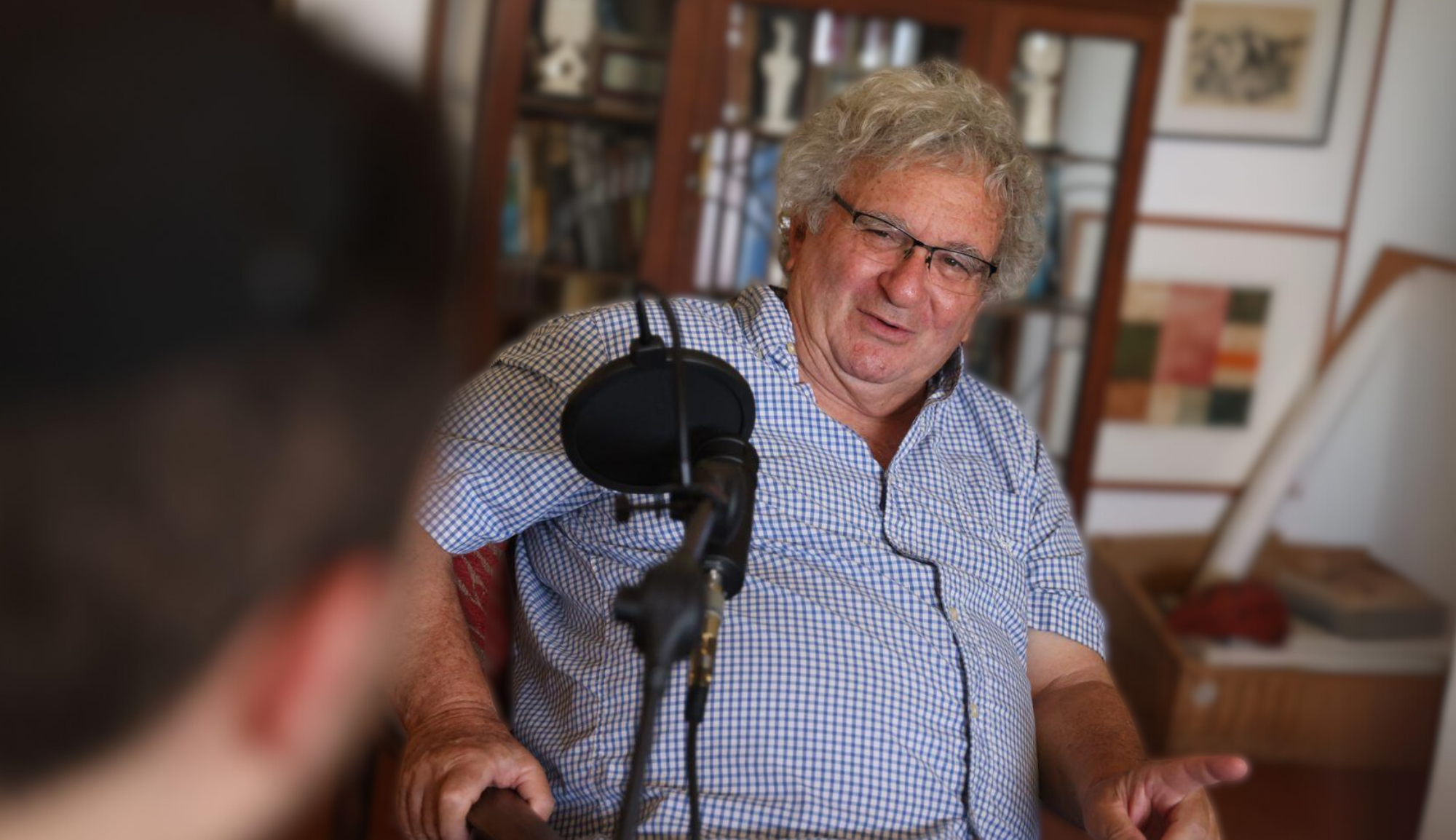This is the eighth essay of 18Forty’s new “Faith in Reason” series with Rabbi Steven Gotlib, released every month. Sign up for it here, and read the seventh essay here.
Anyone familiar with the Jewish community knows that there are multiple denominations of Judaism, some of which are mutually exclusive to others. On a descriptive level, that’s obvious. But need it be true on a prescriptive level? The Torah, after all, was not addressed to Orthodox, Conservative, and Reform Jews but only to the People of Israel. If God did not care for denominational labels, why should we?
Do We Need Denominations?
Perhaps there is much to learn from the Lubavitcher Rebbe’s famous statement that “labels are for shirts,” and his affirmation that the divide between Reform, Conservative, and Orthodox Jews is an artificial one. According to Chabad.org, being Jewish is “an essential state of being,” and there are three types:
- Jews who do mitzvot
- Jews who do more mitzvot
- Jews who do even more mitzvot
Other thinkers who have made similar statements are Rabbi Joseph Dweck, the Senior Rabbi of Britain’s Spanish and Portuguese community, and Rabbi Jonathan Sacks, former Chief Rabbi of the United Hebrew Congregations of the Commonwealth. Rabbi Dweck discusses how Sephardim have a more or less united view of Torah standards, despite how close or far any individual is from living up to them. Speaking at Yeshiva University, Rabbi Sacks advocated abandoning identification as an Orthodox Jew (modern or otherwise) in favour of instead representing “the Jewish voice in the conversation of mankind.” In his book One People, Rabbi Sacks went so far as to write that
Orthodoxy… recognizes pluralism along many axes. It recognizes at least some other faiths as valid religious options for non-Jews. It recognizes, within Judaism itself, different halakhic traditions: Ashkanezai and Sephardi, for example, or Hasidic and Mitnagdic. Beyond halakhah, it legitimates a vast variety of religious approaches: rationalist and mystical, intellectual and emotional, nationalist and universalist, pietist and pragmatic. But it does not recognize the legitimacy of interpretations of Judaism that abandon fundamental beliefs or halakhic authority. It does not validate, in the modern sense, a plurality of denominations. It does not see itself as one version of Judaism among others.
A lesser-known fact is that the Conservative Movement historically saw itself the same way. Conservative theologian Rabbi Dr. Neil Gillman articulated this well in his book Conservative Judaism: The New Century. According to Gillman, the founders of the Conservative Movement
used the terms conservative (or Conservative), traditional, orthodox (or Orthodox), and historical as synonyms. These founders represented classical Judaism. They were creating a broad coalition of traditionalist Jews for the purpose of opposing Reform. They could not imagine that America would ever produce a significant body of Jews who were even more traditional than they and who would challenge their legitimacy.
This was not the case for Reform Judaism, who saw the articulation of their principles via the Pittsburgh Platform as, in Isaac Mayer Wise’s words, “a Declaration of Independence” to set themselves apart from the traditional Jews around them.
What these Orthodox and Conservative articulations all have in common is the conviction that Torah sets one universal standard which is applicable to Jews no matter how they subjectively identify. In all but the Reform formulation, what kind of Jew someone identifies as matters much less than whether they (a) view themselves as being within an authentic framework of traditional Judaism—complete with standards of practice going back to the Torah itself—and (b) the degree to which they observe said commandments. “Orthodox Judaism” is simply the label given to a broad group of people who see themselves as obligated to follow the Divine commandments and who, on average, observe the brunt of them.
Philosopher Rabbi Dr. Sam Lebens argues in his book The Principles of Judaism that “the warrant of Sinai flows most forcefully today in the direction of Orthodoxy” as opposed to other denominations and argues in his Guide for the Jewish Undecided that once a neutral Jew commits to living a Jewish life, “it is commitment to Orthodox Judaism that makes the most rational sense.” This is obvious even by a cursory read of the Talmud and later codifications of Jewish law followed by a glance at which “denomination” lives most consistently by them.
What this means is that even if one forgoes denominational identification, the most authentic form of Judaism is still what could be called “Orthodoxy.” Denominations that do not believe halacha to be binding, or which apply halacha in directions that the Bible and Talmud do not support do not become valid options within this denominational framework. Rather, Torah is the standard by which all hold themselves and while that provides certain room for flexibility it does not present absolute freedom. As Rav Hershel Schachter notes,
just as Hashem has set borders between day and night, so too has He distinguished between kohanim, leviim, and yisraelim; and so too all of the Torah represents the boundaries distinguishing between the muttar and the assur. There is a broad two dimensional area of muttar, and not just a straight line. In the Torah way, we don’t have to be careful not to get “out of line”, rather we have to be careful not to cross over the border (gevulos).
He goes on to quote the prophet Hoshea that “the paths (in the plural) of Hashem are straight”—implying that there is “more than one lane in this wide highway.” This all shows that there are many legitimate ways to be Jewish, but emphasizes the importance of staying on the highway or within the broad area that the Torah provides us. People will obviously be at different levels, some more observant and some less observant, but we must all strive to reach the same destination.
This approach is taken in an extreme direction by Rabbi Efrem Goldberg, who wrote that
There are those who are confident about what hashkafic tribe they come from. They walk in and out of one narrow gate. But I believe there are many of us, maybe even most of us, who see ourselves as part of the Sha’ar Hakollel of life, drawing from the richness of the Torah world, uncomfortable and unwilling to lock ourselves into a narrow gate, but instead embracing a vast and expansive entrance. We don’t alternate between hashkafas or practices, we integrate them.
… The Almighty doesn’t limit us to what yeshiva, seminary or school we graduated. He doesn’t only know us by what we wear on our head, how we voted, what nusach we daven, or if we eat gebrokts or kitniyos. Hashem is complex, His Torah is multifaceted and has seventy faces, and our personalities and practices are made up of many parts. We don’t alternate between them like someone with multiple personalities, but we synthesize, integrate, and weave them into a rich tapestry.”
Of course, as I’ve heard more times than I can count in the name of Prof. Nechama Lebowitz, “the Torah has 70 faces, not 71!” Denominational labels are irrelevant and Torah provides us many options of how to live, provided that we still live firmly within the realm of Torah and mitzvot.
Orthodoxy, then, cannot consider other denominations (at least those which deny the divinity of the Torah and/or the lived obligations which stem from it) to be legitimate expressions of the Jewish tradition. In Rabbi Sacks’ words, Orthodoxy “is the refusal to transform Jewish law from the revealed constitution of the covenant into a self-defined code of personal autonomy or an evolving historical process… Orthodoxy is defined in terms of truth and authority, not interpretation and option. This fact cannot be translated into pluralism.”
Even translating Orthodoxy into an inclusivist enterprise (which Rabbi Sacks strongly advocated) requires “a refusal to accept the self-evaluation of those outside tradition… Attaching no significance to liberal Jews’ description of their own actions and intentions allows Orthodoxy to include individuals within the halakhic community excluding their ideologies.” Thus, Jews belonging to various denominations are accepted, while the denominations themselves are rejected on not only a basis of policy, but of theology. Whether one calls it this or not, the only “denomination” that Jewish theology as learned out from the Bible and Talmud allows for is an Orthodox one. People may be more observant or less observant, but the framework has to be Orthodox.
Is this the right approach, though? Perhaps there is much to learn from the current state of world Jewry! To get to the bottom of that question, let’s first explore the major Jewish denominations.
The Rise of Post-Denominationalism
In his book, Judaism as a Civilization, Mordecai Kaplan sought a more positive framing of denominational differences than the common quip of Reform as lazy, Orthodoxy as crazy, and Conservative as hazy. He instead placed the main denominations in conversation with tradition—that amorphous entity that all Jews live somehow in relationship with. In Kaplan’s framework, Jewish secularism sought to reject tradition, Orthodoxy sought to preserve tradition, Conservative sought to explain tradition, and Reconstructionism (the denomination he founded as an offshoot of Conservative) sought to improve tradition. In this rendering, each denomination is the protagonist of its own story, responding to the traditional default in the way it and its members felt was best without taking the secular approach of simply rejecting tradition. Each denomination founded its own rabbinical schools, lay organizations, and the like in efforts to spread its approach. (The recent 18Forty series did a wonderful job of delving into this and explaining where things stand.)
At this particular moment in history, though, we are witnessing an increase in what might be framed as post-denominationalism—a coalescing of values and transcendence of the membranes that have previously been understood as separating one Jewish movement from another. Increased collaboration between Reform and Conservative Judaism have led community leads like Reform Rabbi Angela Buchdahl to posit that there are no longer substantive differences between non-Orthodox Jews outside of their synagogue communities, and that even Reform and Conservative shuls now have very similar vibes.
This coupled with a rise in those who explicitly identify as socially Orthodox (rather than theologically so) have led to a reality which gives every appearance of coalescence across the denominational spectrum. Witnessing such trends on the Upper East Side of Manhattan, Conservative Rabbi Elliot Cosgrove contended that “the difference between Reform, Conservative, and Modern Orthodox Jews is a difference of degree and not of kind. Everyone is picking and choosing mitzvot. No longer a prix-fixe menu, Judaism has become a buffet prepared to serve the individual tastes of the contemporary Jew.”
This was also noted by historian Jack Wertheimer, who reflected in his book The New American Judaism that “Jews across the spectrum tend to decide for themselves which mitzvot (commandments) they will observe and which they will ignore. From an outsider’s perspective these choices may appear arbitrary and inconsistent, though presumably they make perfect sense to the individual.”
Prof. Roberta Rosenthal Kwall noted as well in her book, Remix Judaism, that “there is much to suggest that American Jews are entering into a post-denominational phase, with the divisions grouped along the lines of “traditional versus liberal” rather than according to specific denominational affiliations” and took it upon herself to “to open a dialogue with all Jews, and other willing listeners, about how to strengthen their connection to the teachings and practices of the Jewish tradition in a way that comports with the sensibilities of Jews who are not, and never will be, observant by conventional measures.” This is accomplished by encouraging such Jews to
- Select rituals and/or traditions to bring into their life;
- Infuse those rituals and/or traditions with their own personal meaning; and
- Consistently perform those rituals and/or traditions in a way that embraces their historical authenticity
As I’ve made clear in my review of Kwall’s book and elsewhere, such perspectives are not Orthodox and are unlikely to find acceptance within the Orthodox community. That does not, however preclude Orthodox Jews from being able to appreciate this sort of approach as a stepping stone for non-Orthodox Jews towards greater connection to their Judaism and thus towards greater mitzvah observance. Indeed, the move Kawall notes away from denominationalism and towards a spectrum of liberal to traditional is similar to the Lubavitcher Rebbe’s statement which opened this essay.
A New Reading of Post-Denominationalism?
One particular Orthodox rabbi learning from this perspective is 18Forty’s Rabbi Dovid Bashevkin. In his article “What Jewish Denominations Mean to Me,” he wrote that “On an individual level, we are all Reform, on the familial level we are all Conservative, and on the institutional/communal level we are all Orthodox.” What he meant was that “everyone, whether they know it or not, uses the methodology from each of the major Jewish denominations to figure out their own lives.” (Interestingly, this framework echoes Kaplan’s typology of Judaism as constitutive of the “Three B’s—Beliefs, Behavior, and Belonging.”)
Reform Judaism, at its core, was meant to encourage the “embracing a Judaism that could resonate in the modern mind.” As I’ve noted many times throughout this series, and as Rabbi Bashevkin wrote in his article, “the only thing that can command someone in the privacy of their lives is what they feel in their heart is true—whether belief in God, halachic observance, connection to Zionism.” He adds that there are many Orthodox people who, in such private moments, are not as observant as they may appear otherwise precisely because their internal convictions do not match their Orthodox public presentation. Thus, like Reform Jews who decide what aspects of Judaism do and don’t resonate with them, it is healthy to “spend some time alone; it allows people to discover what they really feel, think, and believe about their Jewish life. We should explore and discover what we believe as individuals.”
Conservative Judaism made many of its most famous and infamous decisions on the basis of what Solomon Schechter called Catholic Israel. He wrote in Studies in Judaism that since what would become Conservative Judaism viewed Torah as “mainly a product of changing historical influences, it follows that the centre of authority is actually removed from the Bible and placed in some living body, which… is not represented by any section of the nation, or any corporate priesthood, or Rabbihood, but by the collective conscience of Catholic Israel as embodied in the Universal Synagogue.” Halakhah, in other words, would follow what the Jewish people do in practice rather than be bound only by what they should do in theory. This leads to the familial way that Rabbi Bashevkin suggests we are all Conservative. In his words, “religious life at home needs to feel normal, well-adjusted, and comfortable. Sometimes that may mean not imposing certain stringencies or practices that may be personally fulfilling or even true on everyone in the household. People go out and see what is normally done, what is a healthy or realistic expectation.”
Finally, Rabbi Bashevkin argues that we are all Orthodox on the communal/institutional level. This means that, once one locates a community or institution which they identify with, there will be certain personal sacrifices that must be made. “Every community, by definition, asks that we sacrifice or inhibit some of our individual identity for the sake of communal belonging. Every community, synagogue, and school—regardless of denomination—needs standards, expectations, and a culture to reinforce what they think is correct.” This echoes the argument Miri Freud-Kandel recently put forward that even Orthodox affiliation, with its promises of “external sources of authority that are beyond questioning and which claim to build on objective, transcendent accounts of truth… represents a choice in the spiritual marketplace.” Returning to Kwall’s methodology, choosing to be Orthodox in the face of other denominational options may itself paradoxically be an act of remixing Judaism towards traditionalism.
Rabbi Bashevkin concludes the article with his affirmation that “there is something to learn from each denomination, their histories, and their struggle.”
This is something that I wholeheartedly second. He correctly writes that “especially in this moment, where so many are searching and reflecting on their Jewish identity, it is important to understand that our individual, familial, and institutional identities will never perfectly align even though we need all three to nourish our Judaism” and that thinking about the stories of Judaism’s main denominations can prove insightful even (perhaps especially) to Orthodox Jews struggling to find their way.
This idea also turns up in an article by Rabbi Shmuel Goldin, then president of Yeshiva University’s Rabbinic Alumni association, who argued that “we must learn to value each other as Jews and value each other’s contributions to the fabric of Jewish life without feeling that by doing so we are validating each other’s belief systems and thereby compromising our own.” This can be accomplished via the following steps: “Step #1: Learn more about each other and to respect each other’s boundaries. Step #2: Define and deal with differences between us coherently and clearly. Step #3: Engage in self-evaluation in our own denominations. Step #4: Find ways to make decisions together that benefit the Jewish community at large.”
Such an approach provides much room to partner with other denominations in cases of mutual interest. Rabbi Moshe Hauer, Vice President of the OU, recently reaffirmed support “for all Jews to stick together as we face growing antisemitism.” He lays out, however, “four positions and values that fail this test and would preclude ongoing assumed partnership on defending Jews and supporting Israel.” While disagreeing with any does not necessarily render a group completely illegitimate, “partnership with those who fail on any of these counts would force us to dilute and curtail rather than enhance and strengthen our support for Israel.” Therefore if a denomination or organization 1) aligns with those who seek to harm Jews; 2) do not prioritize Jewish self-defense; 3) do not see and champion the goodness that permeates Israel and who seem more ashamed than proud of Israel; and 4) fail to unconditionally support the existence and defense of Israel even when critiquing it, such groups may not be productive partners.
This all, of course, must come from an Orthodox perspective that is confident in itself—grounded in the truth and rationality of its positions to the exclusion of non-Orthodox alternatives. It is only from that vantage point that an Orthodox Jew can then look to other denominations and translate important lessons into a language that will not descend into heterodoxy. As Rav Shagar wrote in Faith Shattered and Restored, the best cure to many of the spiritual ills within the Modern Orthodox/Religious Zionist community may well be an “authentic haredism that… is not motivated by the rejection of other cultures or lifestyles or the attempt to identify them with haredism” but is rather
driven by an acceptance of multiculturalism that enables it to choose itself without rejecting or delegitimizing other cultures, and without becoming rigid. Such a haredism will excel at creating gaps between various frames of reference in a manner that retains the truth of each, and prevents the distortions that arise from attempted syntheses, while rigorously empowering and maintaing the boundaries of its own truth.
I sincerely hope that this Faith in Reason series, taken as a whole, can provide readers with the tools to do so.
Rabbi Bashevkin wrapped up his article by writing that “The goal is not to become Orthodox, Conservative, or Reform—labels that have only existed for 200 years.” Instead,religious seekers ought to piece together “a Jewish life that nourishes their individual self, their family, and their community. And with the right methodology, there is a nourishing Judaism for each of us.” One can even argue, from an Orthodox perspective, that supporting non-Orthodox denominations is an important endeavor. In an article entitled American Orthodox Jews Can and Should Care About Whether Liberal Judaism Thrives, Kwall points out that kiruv efforts, kosher food services, kosher caterers, and Orthodox-affiliated teachers are all more successful when the liberal communities surrounding them are viable and that “the preservation of a rich and vibrant Jewish tradition for a greater number of Jews is critical for a flourishing Jewish future in the United States” even if those Jews are not themselves Orthodox. Another defense of non-Orthodox Judaism can be found in an article by Rav Lichtenstein in Leaves of Faith Volume 2:
Surely, we have many sharp differences with the Conservative and Reform movements, and these should not be sloughed over or blurred. However, we also share many values with them – and this, too, should not be obscured. Their disappearance might strengthen us in some respects but would unquestionably weaken us in others. And of course, if we transcend our own interests and think of the people currently served by these movements – many of them, both presently and potentially, well beyond our reach or ken – how would they, or klal Yisrael as a whole, be affected by such a change? Can anyone responsibly state that it is better for a marginal Jew in Dallas or in Dubuque to lose his religious identity altogether rather than drive to his temple?
Post-denominationalism allows for a reality in which all Jews exist on one singular spectrum from liberal to traditional. Different people may need to stop at different points along that spectrum, but removing denominational labels from the thought process allows for constant room to climb higher towards the Torah’s expectations and a life full of mitzvot. Most importantly, it provides a framework by which “Orthodox” Jews can engage with “Non-Orthodox” Jews in the most productive of ways – something that Chabad understands better than most movements, as Cosgrove preached to his Conservative congregation one Yom Kippur:
The positive and open expression of your Jewish self: that is the argument for a mitzvah. Think about the choreography; I imagine most everyone in the room has been invited to the dance at least once. First, the question: “Excuse me, are you Jewish?” And then, the follow-up. If you are a man: “Would you like to put on tefillin?” Or, if you are a woman: “Would you like to learn how to light Shabbos candles.” The question is not an “ask.” It is an offer, an invitation, perhaps even a challenge. Would you, by way of performing this distinctly Jewish act, this mitzvah, please self-identify as a Jew? Performing a mitzvah is a proud transformation of the universal self into a Jewish self, making manifest one’s particular identity by way of the decision of what to eat, how to structure one’s time, and how to present oneself to the world. Why should you observe mitzvot? Because doing so is the means by which you express pride in who you are and in where you came from and your hope that those who come after you will feel and do the same. There is no greater act of Jewish self-assertion, empowerment, and hope than the performance of a mitzvah. To do a mitzvah is to take agency for your spiritual life.
The Cost
I would be remiss, however. If I did not mention the implicit cost of engaging in post-denominational discourse. If denominationalism is overrated, then so is identifying with the label of “Orthodoxy.” The ironic truth is that embracing post-denominationalism from an Orthodox perspective necessitates leaving identification with Orthodoxy behind since it has come to be a denominational label in itself.
Of course, turning away from Orthodoxy in this context need not mean embracing heterodoxy. Many in the Haredi world will often say things like “I’m just a yid trying to do as many mitzvos as I can”or call themselves a “Torah Jew.” Orthodoxy itself, after all, was a designation originally used disparagingly by enemies of tradition rather than something chosen by those who were just trying to live traditional lives of Torah and mitzvot.
On the other hand, one can argue that the word “Orthodoxy” does not necessarily imply a specific denomination, but just holding the correct Jewish viewpoints. In that sense, Orthodoxy may just mean today what “traditional” meant centuries ago. Therefore some might cogently abandon denominations while still referring to themselves as “Orthodox Jews” in good conscience.
Conclusion
Returning to the Lubavitcher Rebbe’s metaphor of denominational labels as shirts, there is certainly a descriptive use for them. In addition to keeping both covered and warm, the color, style, and design on one’s shirt says a lot about the one who wears it, and so too does their denominational affiliation say a lot about their religious priorities. But just as shirts do not alter the person wearing them, neither do denominations alter the fact that all Jews are part of a covenant with God laid out in the Torah. Despite the inability to validate such expressions of Judaism, Orthodoxy has much room to value them and to remain partners against common threats. Furthermore, as the non-Orthodox world moves further away from denominational labels, it might be wise for Orthodox Jews to do the same, provided that we do not sacrifice our commitment to the Truth of Torah and mitzvot in the process. Such commitment can be ensured by grounding ourselves in the confidence that comes with a rational, well thought-out, and articulate approach to our religious faith.
Recommended Reading
Barry L. Schwartz, Open Judaism
A fascinating and recent book that attempts to outline Judaism’s major questions from the perspectives of Orthodox, Conservative, Reform, and Reconstructionist Judaism. The end of the book asks a series of hashkafic questions to help readers determine which they best align with. The book is far from perfect, and biased in favour of liberal denominations, but is a helpful overview of what the different denominations believe and how they practice.
Rabbi Lord Jonathan Sacks, One People?
One of Rabbi Sacks’ early books, exploring the question of how to build an inclusive Orthodox Judaism at a time when the various denominations are “divided by a common language” using basic terms like halakhah in mutually exclusive ways.
Michael R. Cohen, The Birth of Conservative Judaism
An exploration of how Orthodoxy and the Conservative Movement broke away from each other, demonstrating the fluidity and development of boundary lines over time.





































